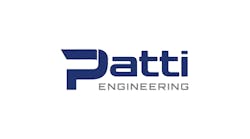Luckily, just as moms and dads are spelled by relatives, babysitters and daycare providers, better supervisory control and data acquisition (SCADA) tools are arriving to help users and supervisory systems cope even as they take on new and bigger jobs. And, as usual, wireless, tablet PCs and the cloud are getting in on the act.
For instance, Solvay Chemicals' trona ore mine and refinery in Green River, Wyoming, recently migrated from Yokogawa Corp. of America's Centum CS3000 distributed control system (DCS) to its new Centum VP-R5 control system, and updated 21 field controllers and numerous other support components. Trona ore contains sodium sesquicarbonate, a relatively rare, sodium-rich mineral that's used to make soda ash, an essential ingredient in glass containers and other products, chemical manufacturing, soaps and detergents, flue gas desulfuring, pulp and paper and water treatment. Solvay mines about 11,000 tons of ore per day from the mine, which is refined into about 6,000 tons of pure trona. This also frees about 6 million cubic feet of natural gas per day, which used to be burned off, but is now used to run the refinery's kilns.
Figure 1: Solvay Chemicals' Green River trona ore mine in Wyoming recently migrated from Yokogawa's Centum CS3000 DCS to its Centum VP-R5 control system and updated 21 field controllers and support devices.
Photo Credit: Yokogawa and Solvay
"We had to upgrade because our Microsoft Windows XP components were no longer supported in 2014, and so their costs were going to go way up," says Kevin Kelley, process control foreman at Solvay Chemicals. "We were scheduled for a five-year, total plant outage, and we needed update our RIO field control stations with new templates and offline downloads that had never been done since they were initially installed. We also needed to upgrade our system security to meet Solvay's overall, corporate IT standards."
Streamlining SCADA
Besides installing servers, cabinets, control room equipment and other VP-R5 components that were much less cluttered than their CS3000 counterparts, Kelley adds that some of Solvay's staff traveled to Yokogawa's Houston offices for Centum VP graphics evaluation and training. They determined what their new graphics would look like and evaluated Solvay's existing CS3000 database of over 350 graphics to make sure it would cut over to VP's graphics.
See also: CADA software keeps eye on big picture
"With our short cutover timeframe, it was important to maximize our time to do the offline downloads and operator station replacements," reports Kelley. "This meant that we needed all the infrastructure in place as much as possible when Yokogawa arrived. It involved months of prep work, specking out parts and installing cabinets with UPS power, fiber runs for the keyboard, video, mouse (KVMs) and Vnet routing. We also pre-mounted the KVM units under the control desks. All we needed to do during the outage was to slide new machines in the racks and hook them up."
The upgrades three main phases included pre-loading and staging workstations in new cabinets; cutting over by downloading software to field control stations, and running reports to compare changes to block nodes; and upgrading and verifying that Green River's OPC server was up and that it was gathering data in its AspenTech plant historian. The team also upgraded and verified that their VTSPortal was fully functional and that other EXA and PRM software had the latest revisions.
"Finally, our operator and engineering stations were changed out live, one at a time," adds Kelley. "Each operation area has two HISs. We changed out one station at a time, until each area had one VP station and one CS station. This took two days to complete, and it gave the operators time to get accustomed to the new stations. After the two days, we went around again and changed out the remaining stations. This worked well.
"For the total upgrade, we experienced no loss of production, and the plant came back online without any problems. About one month after the outage and cutover, a Yokogawa engineer returned to the site to do a follow-up. This gave us an opportunity to ask questions about VP-R5 and to tie up any loose ends. Next, we're undertaking a project to convert our graphics from the old 1990s style graphics to more high-performance, alarm-oriented graphics."
Strengthening Outsize Infrastructures
Besides assisting plant operations, improved SCADA systems can also meet the needs of more geographically distributed process applications.
Figure 2: The GIWW-WCC protects three New Orleans parishes from flooding, includes the largest drainage pumping station in the U.S., and uses Rockwell Automation's hot-standby SCADA servers and dual, hot-standby ControlLogix PLCs for redundancy, as well as FactoryTalkView SE software for monitoring, control, data logging and reporting.
Photo Credit: U.S. Army Corps of Engineers and Rockwell Automation
As a result, GIWW-WCC needed a reliable and secure SCADA system before its scheduled completion in 2013, so the Corps worked with system integrator Prime Controls and consultant Arcadis to implement a redundant Integrated Architecture platform from Rockwell Automation, which includes Allen-Bradley ControlLogix PACs and FactoryTalk View SE visualization software running on a redundant Ethernet ring network. Also, Allen-Bradley CompactLogix PLCs manage the fuel delivery and return system’s distributed I/O.
"The critical nature of the pump stations requires redundancy in every system," says Gary McNiel, senior vice president at Prime Controls. "Hot-standby, dual ControlLogix controllers and hot-standby SCADA servers supply the necessary backup. We chose FactoryTalk View because it provides monitoring and control graphics as well as required reporting and data logging."
The resulting SCADA solution supplies all information needed to operate GIWW-WCC's pumping stations, including pump, engine, electrical generator and water-level data from the intake and discharge areas. The system also monitors the pump’s diesel-fuel levels and incorporates weather information and closed-circuit television (CCTV) surveillance for security. Also, the same SCADA system controls the sector gates that regulate the water level across the navigational waterway.
Finally, when Hurricane Isaac and its 12-foot storm surge arrived in 2012, GIWW-WCC withstood the test, and successfully protected much of New Orleans.
"Wi-Fi and iPads aren't new for many users, but they're still very new for operators in many water treatment plants and other process applications. To them, getting process data from a smart phone is still Star Trek stuff," says Dennis Wylie, product manager for ControlLogix at Rockwell Automation. "However, tablet PCs and smart phones are available, so they just need some enabling technology. Security is the key. SCADA was historically open to mildly secured systems, so hackers gaining access wasn't uncommon. But ever since Stuxnet, SCADA has been viewed as critical infrastructure by the U.S. Dept. of Homeland Security. To provide all the data that users want, but still meet security and validation requirement, SCADA has been evolving. We're adding more and faster embedded communication throughputs, new ways to handle I/O data, enhanced diagnostics and more security measures. This means we can identify what's happening, know what's wrong and take action sooner."
Green and the Cloud
Beyond managing routine operations and larger infrastructures, some supervisory control solutions are spreading their wings to help out with sustainability in their applications and even using cloud-based data processing services to do it.
For example, PML Exploration Services in Houston, Texas, provides real-time gas analysis to its clients by using web-based tools in InduSoft's Web Studio SCADA software. Previously, PML could only provide gas and geologic updates from rigs twice per day, so delays could be as long as 12 hours between analysis and reporting. Now, well operators use PML's up-to-the-minute gas analysis and detailed, web-viewable geological information to optimize their time, protect well investments and ensure operational safety.
Web Studio also allows users to store their information on a cloud-based service, so rig operators and site managers can have ready access to data, even when they're at remote locations. In fact, PML reports that 60 active rigs are using Web Studio for data acquisition, control and display of wellsite data. Operations are constantly monitored by PML employees at well sites, and data is sent to each client and PML via satellite connections. Managers can review data on their smart phones, tablet computers or via text messages and SMS, while well operators can keep track of changes by using InduSoft's Web Thin Client web browser and pulling reports from the cloud.
"One of the main advantages of Web Studio was that we didn’t have to write code from scratch for cloud-based technology," says John Parsons, PML's president and CEO. "It was all right there in the software. This allowed us to put the information directly in the hands of the customers by providing a good web solution."
Likewise, Sofidel reports it recently needed to upgrade automation at its Délipapier plant in Frouard, France, so it decided to work with Metso to virtualize the DCS and quality control system (QCS) on its Tissue Machine 1 to help reduce computer hardware needed by the upgrade and reduce the cost of maintaining multiple operating platforms at the mill.
Virtualization allows the tissue machine's physical computer hardware to be separated from the software by creating virtual machines (VMs) in a host server to provide a more fault-tolerant and stable environment for critical applications. Fabrizio Lapucci, Sofidel's corporate automation manager, reports that its upgrade at Délipapier is the world's first virtual process and quality control system on a tissue machine. "An additional advantage is that the servers are now located in a clean and controlled environment, which will maximize their service life," adds Lapucci.
To improve process visibility, new tools on Tissue Machine 1 include Metso's DNA Historian software, which is a data management system that collects real-time process data, including all measurements, setpoints, controller outputs, device statuses, motor starts, alarms and operation tracking, and sends them to the history database. "We have immediate access to details about a problem whether it occurred at the weekend or six months ago," adds Stephane Bonnet, Délipapier's production manager. "We use it all the time to improve the process. Recently, during a problematical color change, it made it easy to see that a small mistake had been made with consistency, and in the future we'll be able to avoid it. Previously, this problem with a consistency setpoint would not have been seen. Now we know what to do and have changed procedures for future color changes. Improvements like this have a big impact on our production."





